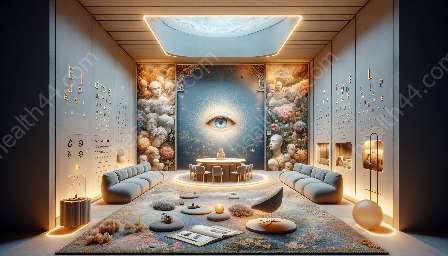Color perception is a fascinating subject that encompasses various aspects of vision psychology, perception, and vision care. This topic cluster will delve into the science behind how we perceive color, its impact on our daily lives, and its connection to vision psychology and perception.
The Science of Color Perception
Color perception is the ability of the human brain to interpret and make sense of the wavelengths of light that are detected by the eyes. This process involves the interaction of light, the visual system, and the brain, leading to the experience of colors in our environment. The human eye contains specialized cells called cones, which are sensitive to different wavelengths of light and enable us to perceive a wide spectrum of colors. The brain plays a crucial role in processing and interpreting the signals received from the cones, ultimately allowing us to perceive and differentiate between various colors.
Color Vision Theories
Researchers and vision psychologists have developed various theories to explain how color vision works. The trichromatic theory, proposed by Thomas Young and Hermann von Helmholtz, suggests that color vision is based on the combined activity of three different types of cones, each sensitive to either red, green, or blue wavelengths of light. Another theory, known as the opponent-process theory, postulates that the visual system processes color information in an antagonistic manner, with pairs of colors being perceived as opposites, such as red versus green and blue versus yellow.
The Impact of Color Perception on Daily Life
Color perception influences many aspects of our daily lives, from the choices we make in interior design and fashion to the emotions and moods evoked by different colors. Psychologists have studied the psychological and emotional effects of colors, finding that they can have a profound impact on human perception and behavior. For example, warm colors such as red and yellow are often associated with energy and vitality, while cooler colors like blue and green are linked to calmness and tranquility.
Color Perception and Vision Care
Understanding color perception is essential in the field of vision care. Optometrists and ophthalmologists assess patients' color perception as part of comprehensive eye exams, as deficiencies in color vision can indicate underlying eye conditions or neurological issues. Additionally, color perception plays a role in the development of vision correction technologies and products, as the ability to perceive accurate and consistent colors is crucial for tasks such as selecting and fitting eyeglasses or contact lenses.
Conclusion
Color perception is a multifaceted and captivating area of study that intersects with vision psychology, perception, and vision care. By exploring the science of color perception and its impact on daily life, we gain a deeper understanding of how our brains process and interpret the vibrant world of colors around us.


